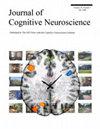Amygdalar Excitation of Hippocampal Interneurons Can Lead to Emotion-driven Overgeneralization of Context
IF 3.1
3区 医学
Q2 NEUROSCIENCES
引用次数: 0
Abstract
Context is central to cognition: Detailed contextual representations enable flexible adjustment of behavior via comparison of the current situation with prior experience. Emotional experiences can greatly enhance contextual memory. However, sufficiently intense emotional signals can have the opposite effect, leading to weaker or less specific memories. How can emotional signals have such intensity-dependent effects? A plausible mechanistic account has emerged from recent anatomical data on the impact of the amygdala on the hippocampus in primates. In hippocampal CA3, the amygdala formed potent synapses on pyramidal neurons, calretinin (CR) interneurons, as well as parvalbumin (PV) interneurons. CR interneurons are known to disinhibit pyramidal neuron dendrites, whereas PV neurons provide strong perisomatic inhibition. This potentially counterintuitive connectivity, enabling amygdala to both enhance and inhibit CA3 activity, may provide a mechanism that can boost or suppress memory in an intensity-dependent way. To investigate this possibility, we simulated this connectivity pattern in a spiking network model. Our simulations revealed that moderate amygdala input can enrich CA3 representations of context through disinhibition via CR interneurons, but strong amygdalar input can impoverish CA3 activity through simultaneous excitation and feedforward inhibition via PV interneurons. Our model revealed an elegant circuit mechanism that mediates an affective “inverted U” phenomenon: There is an optimal level of amygdalar input that enriches hippocampal context representations, but on either side of this zone, representations are impoverished. This circuit mechanism helps explain why excessive emotional arousal can disrupt contextual memory and lead to overgeneralization, as seen in severe anxiety and posttraumatic stress disorder.杏仁核对海马内部神经元的兴奋可导致情绪驱动的情境过度泛化
情境是认知的核心:详细的情境表征可以通过将当前情境与先前经验进行比较来灵活调整行为。情绪体验可以大大增强情境记忆。然而,足够强烈的情绪信号却可能产生相反的效果,导致记忆减弱或不那么具体。情绪信号怎么会产生这种强度依赖效应呢?从最近关于杏仁核对灵长类动物海马影响的解剖学数据中,我们发现了一种看似合理的机理解释。在海马 CA3 中,杏仁核对锥体神经元、钙视蛋白(CR)中间神经元以及副缬氨酸(PV)中间神经元形成了强有力的突触。众所周知,CR 中间神经元能解除对锥体神经元树突的抑制,而 PV 神经元则能提供强烈的周围抑制。杏仁核既能增强又能抑制 CA3 的活动,这种潜在的反直觉连接可能提供了一种机制,能以强度依赖的方式增强或抑制记忆。为了研究这种可能性,我们在尖峰网络模型中模拟了这种连接模式。我们的模拟结果表明,适度的杏仁核输入可以通过 CR 中间神经元的抑制作用丰富 CA3 的语境表征,但强烈的杏仁核输入可以通过 PV 中间神经元的同时兴奋和前馈抑制作用削弱 CA3 的活动。我们的模型揭示了一种介导情感 "倒 U "现象的优雅电路机制v:杏仁核输入的最佳水平可以丰富海马的情境表征,但在该区域的两侧,表征则会变得贫乏。这种回路机制有助于解释为什么过度的情绪唤醒会破坏情境记忆并导致过度泛化,如严重焦虑症和创伤后应激障碍。
本文章由计算机程序翻译,如有差异,请以英文原文为准。
求助全文
约1分钟内获得全文
求助全文
来源期刊
CiteScore
5.30
自引率
3.10%
发文量
151
审稿时长
3-8 weeks
期刊介绍:
Journal of Cognitive Neuroscience investigates brain–behavior interaction and promotes lively interchange among the mind sciences.

 求助内容:
求助内容: 应助结果提醒方式:
应助结果提醒方式:


